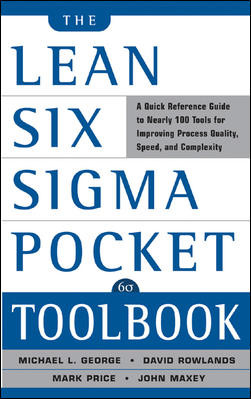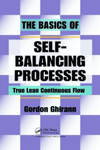Leading Lean: Solve the Right Problem
Before you start down a path, make sure you’re setting off on the correct journey.
Everyone solves problems every day, at home and at work. But a common blind spot is right at the beginning: the problem statement. No matter how well we do at solving a problem, if we solve the wrong problem it was a waste of effort-and lean is about eliminating waste! We must be sure we are solving the right problem.
Often, engineers make things more complicated than necessary. Consider the example of the NASA space pen. During the 1960s, NASA focused a major program on developing a pen that would write in zero gravity, while the Soviet space program used the much simpler and already-invented pencil.
I don’t know for sure because I wasn’t there, but I strongly suspect this came about because of a miss in the problem statement. The Americans were working on this problem: How do we get a pen to write in zero gravity? The Soviets were working on a different problem: How do we write in zero gravity? It seems like such a small, subtle difference, but it had a huge impact on what work followed.
The problem statement establishes our trajectory. If two people depart the same location on a trip, and only 5 degrees separates their trajectory, they will be in drastically different places in a matter of hours. We underestimate how powerful the problem statement can be, and that is pitfall number one. We must respect the impact of the right problem statement. Wrong trajectory; wrong destination.
Consider the difference in impact from two very similar problem statements: How do I get Joe to be a team player or, how do I develop a working relationship with Joe? The first problem statement is all about the other person, but the second problem statement includes the problem owner, giving that person infinitely more power to solve this problem. Here’s another example: We don’t have enough ovens or, we don’t have enough oven capacity. The first problem statement only leads you to buy more ovens. The second helps focus on how you might be wasting oven capacity.
The second pitfall is getting locked into the problem statement as though it is written on a stone tablet. We must be willing to adjust our problem statements. This doesn’t mean our original problem statement was wrong. Writing a problem statement is an iterative process-problem statements are changed because we learn stuff through the process of examining the problem. In my experience of coaching executives on lean thinking, we have to modify a problem statement at least 50 percent of the time.
The third pitfall in problem statements is jumping the gun on too many assumptions before the problem statement is created. We insert unexamined causes and solutions into the problem statement, closing us off to many possibilities. The earlier example of “we don’t have enough ovens” is an example of putting the solution in the problem statement. There is only one solution to that problem-buy more ovens. It immediately closes you off to many possibilities. When we assume too much too early, we limit what we can learn through observation and examination.
I have two recommendations for improving problem statement development. The first is to write down the problem statement. Seeing the words on paper or, even better, on a whiteboard, will be a big help in evaluating and improving the problem statement. The second is to pause and ask for input, or offer coaching, on the problem statement before going too far. Ask your team, “Are we sure we have the right problem statement?” This will increase critical thinking significantly. Start with your own problems-write them down and get input. Lean begins with you!
Jamie Flinchbaugh is a founder and partner of the Lean Learning Center in Novi, MI, and the co-author of The Hitchhiker’s Guide to Lean: Lessons from the Road. He shares his successful and varied experiences of lean transformation as a practitioner and leader through companies such as Chrysler and DTE Energy. He also has a wide range of practical experience in industrial operations, including production, maintenance, material control, product development and manufacturing engineering. Jamie is a graduate fellow of the Leaders for Manufacturing Program at the Massachusetts Institute of Technology, where his research thesis was on implementing lean manufacturing through factory design. He also holds a B.S. in Engineering from Lehigh University in Bethlehem, PA, and an M.S. in Engineering from the University of Michigan. To contact Jamie directly, go to the web site www.leanlearningcenter.com.
Everyone solves problems every day, at home and at work. But a common blind spot is right at the beginning: the problem statement. No matter how well we do at solving a problem, if we solve the wrong problem it was a waste of effort-and lean is about eliminating waste! We must be sure we are solving the right problem.
Often, engineers make things more complicated than necessary. Consider the example of the NASA space pen. During the 1960s, NASA focused a major program on developing a pen that would write in zero gravity, while the Soviet space program used the much simpler and already-invented pencil.
I don’t know for sure because I wasn’t there, but I strongly suspect this came about because of a miss in the problem statement. The Americans were working on this problem: How do we get a pen to write in zero gravity? The Soviets were working on a different problem: How do we write in zero gravity? It seems like such a small, subtle difference, but it had a huge impact on what work followed.
The problem statement establishes our trajectory. If two people depart the same location on a trip, and only 5 degrees separates their trajectory, they will be in drastically different places in a matter of hours. We underestimate how powerful the problem statement can be, and that is pitfall number one. We must respect the impact of the right problem statement. Wrong trajectory; wrong destination.
Consider the difference in impact from two very similar problem statements: How do I get Joe to be a team player or, how do I develop a working relationship with Joe? The first problem statement is all about the other person, but the second problem statement includes the problem owner, giving that person infinitely more power to solve this problem. Here’s another example: We don’t have enough ovens or, we don’t have enough oven capacity. The first problem statement only leads you to buy more ovens. The second helps focus on how you might be wasting oven capacity.
The second pitfall is getting locked into the problem statement as though it is written on a stone tablet. We must be willing to adjust our problem statements. This doesn’t mean our original problem statement was wrong. Writing a problem statement is an iterative process-problem statements are changed because we learn stuff through the process of examining the problem. In my experience of coaching executives on lean thinking, we have to modify a problem statement at least 50 percent of the time.
The third pitfall in problem statements is jumping the gun on too many assumptions before the problem statement is created. We insert unexamined causes and solutions into the problem statement, closing us off to many possibilities. The earlier example of “we don’t have enough ovens” is an example of putting the solution in the problem statement. There is only one solution to that problem-buy more ovens. It immediately closes you off to many possibilities. When we assume too much too early, we limit what we can learn through observation and examination.
I have two recommendations for improving problem statement development. The first is to write down the problem statement. Seeing the words on paper or, even better, on a whiteboard, will be a big help in evaluating and improving the problem statement. The second is to pause and ask for input, or offer coaching, on the problem statement before going too far. Ask your team, “Are we sure we have the right problem statement?” This will increase critical thinking significantly. Start with your own problems-write them down and get input. Lean begins with you!
Jamie Flinchbaugh is a founder and partner of the Lean Learning Center in Novi, MI, and the co-author of The Hitchhiker’s Guide to Lean: Lessons from the Road. He shares his successful and varied experiences of lean transformation as a practitioner and leader through companies such as Chrysler and DTE Energy. He also has a wide range of practical experience in industrial operations, including production, maintenance, material control, product development and manufacturing engineering. Jamie is a graduate fellow of the Leaders for Manufacturing Program at the Massachusetts Institute of Technology, where his research thesis was on implementing lean manufacturing through factory design. He also holds a B.S. in Engineering from Lehigh University in Bethlehem, PA, and an M.S. in Engineering from the University of Michigan. To contact Jamie directly, go to the web site www.leanlearningcenter.com.
Looking for a reprint of this article?
From high-res PDFs to custom plaques, order your copy today!






